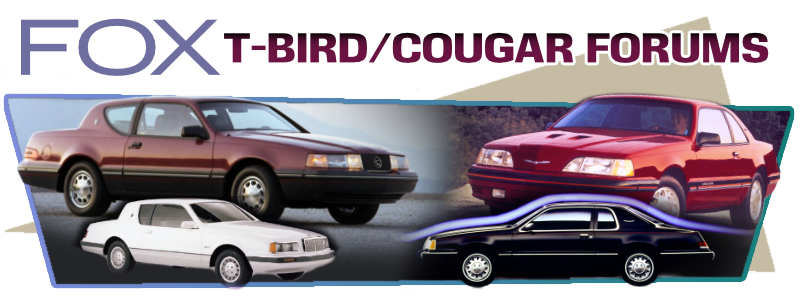[SIGPIC][/SIGPIC]
***** Project "EVOLUTION" 1987 Cougar LS & 1985 Cougar Convertible *****
[/COLOR]
5.0 HO 306 roller block, machined GT-40P heads, Wiseco dished forged pistons, Eagle forged floating I-beam connecting rods, Lunati pushrods, ARP bolts, Scorpion aluminum 1.6 rockers, Comp Cams Magnum 266HR, Explorer intake, 65mm TB, MAF Conversion, 19# injectors, Ford Racing stainless P-headers, 2-1/2" cat-less exhaust w/ Flowtech Afterburner lers , SC AOD with 2800 BDR torque converter, 3.73 T-Lok rear, CHE rear control arms, full 2-1/2" frame w/1" jacking rails & seat supports, Rear disk brakes, Turbine wheels, All original interior w/ floor shift upgrade .......
Pretty much every panel on my 87 is new, rebuilt, or re constructed. :D
Join us on Facebook
 Topic: Glossary (Read 5059 times)
previous topic - next topic
Topic: Glossary (Read 5059 times)
previous topic - next topic
